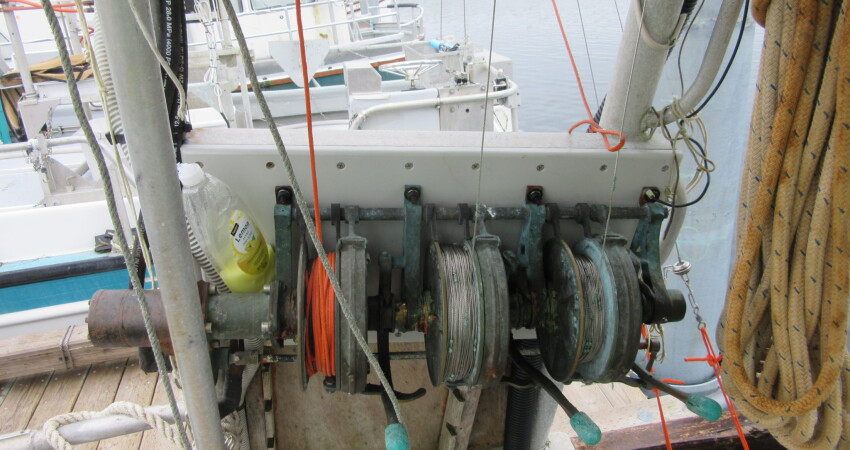Chandler Kemp, owner of Kempy Energetics of Dillingham, Alaska, has been experimenting with hybrid electric boats – primarily salmon trollers in Southeast Alaska – for several years. With grants from various sources, he worked with the Alaska Longline Fishermen’s Association (ALFA), hybrid gear manufacturer Transfluid, and others. Kempy, formerly of Sitka, is now located in Dillingham, Alaska.
“We worked on the hybrid propulsion,” says Kemp. “But we also started looking for ways to save energy on board and started talking about how we could use electric power for the gurdies.”
Most salmon trollers use two or three hydraulic gurdies, small winches, on each side of the boat for reeling in fish. With the number of options growing for electronic deck gear, it’s surprising that just one company, EZ Puller, appears to be making electronic salmon gurdies. EZ Puller markets 12-volt electric salmon downriggers with high amp 12v up/off/down switch assembly.
“We wanted more power than that,” says Kemp. “And we wanted variable speed control rather than the on/off switch.”
Working with ALFA, the National Renewable Energy Laboratory and Sandia National Laboratory through the Energy Transitions Initiative Project Partnership, Kemp and Kent Barkhau designed and built a prototype electric salmon gurdy for Barkhau’s troller, the Woodstock, which he operates with his wife Linda Behnken, ALFA’s executive director.
“The Woodstock has a positive displacement hydraulic pump that’s always pumping when it’s clutched in whether the gurdies are turning or not. So going electric would save energy,” says Kemp. “We took off the hydraulic motor and found a 48-volt motor and gearbox and used a DC-to-DC converter to bring the voltage up from 12 volts. We coupled that to an electric dynamic speed control so you could set the hauling speed just right and take the gear on and off the line without stopping it.”
The electric gurdies Kemp designed could draw up to 50 amps, but use much less in typical operations, and had a typical operating torque of 33 foot-pounds, with a maximum torque of 150 foot-pounds in case the gear becomes fouled in something large. According to Kemp, the prototype unit worked well when Barkau and Behnken used it trolling for chum salmon. “They were getting hundreds of fish a day and it held up for the most part.
“They were getting hundreds of fish a day and it held up for the most part, though there were a couple of glitches,” says Kemp, who also produced a report on the experiment.
“The experiment showed energy savings and that the electric load could be carried by the existing alternator on board,” says Kemp, noting that electric gurdies could save energy on vessels, particularly those with positive displacement hydraulic systems. “For a successful long-term installation, the gearbox and motor would need to be better marinized,” Kemp notes. “The key pieces would be making the motor and gearbox IP67 rated and manufactured with materials that are durable in the marine environment.”







